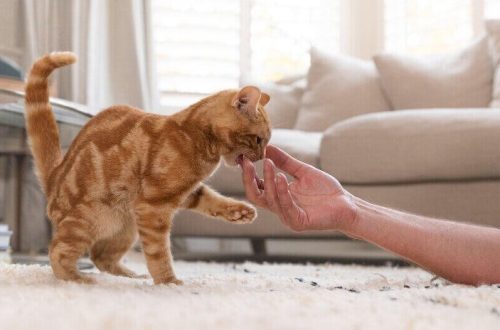
True friends: how cats help people
Guide dogs, assistance dogs for people with diabetes or epilepsy, or emotional support dogs have long been known for their loyalty. What about helper cats? Today, these animals are increasingly being used to help those in need.
Emotional support cats and therapy cats provide comfort to their owners and others in need of emotional and mental help. Helper cats can have a calming and calming effect on people who have to cope with a variety of problems – from loneliness and stress to depression, chronic anxiety and post-traumatic stress disorder.
Contents
Helper cat: does it exist?
As of now, cats are not officially service animals, according to the US Department of Justice. However, some people refer to cats trained to alert their owners to a medical emergency as “service cats.”
Although furry cats are not technically service animals, emotional support cats and therapy cats provide important assistance to their owners and others.
They just don’t have the same privileges as official service animals, such as being able to accompany their owner to the store.
Animal therapy: experiences with cats
Emotional support cats are companion animals that provide comfort to owners suffering from conditions such as anxiety and depression. As Petful points out, a cat doesn’t need to undergo any special training to become an emotional support animal, it just needs to get the appropriate recommendation from the attending physician.
Emotional support animals have a number of legal rights. These are free flights and the opportunity to live with their owners in places where pets are not allowed.
But, unlike service animals, they are not allowed in most establishments, so a furry friend will not be able to keep the owner company for a cup of cappuccino if it is against the rules of the coffee shop. Since the laws differ around the world, you should study the relevant rules and laws of the place of travel in advance.
Therapy: how cats help people
Therapy cats also bring comfort to people with mental problems. Unlike emotional support cats, they are trained and certified by appropriate professionals. Another difference is that therapy cats, while owned, tend to provide care to a wider range of people in need.
The story of one cat-therapist
According to Jennis Garza, writer and president of FitCat Publishing, cats “are actually the perfect therapy animals: they are small enough to curl up on the bed with a patient, they purr, which is very soothing and healing, they are soft to the touch. and more affectionate than they are usually thought.
Garza knows firsthand how effective therapy cats can be. She herself is the owner of a titled Somali cat named Summer, which she trains and trains from the age of five months. In 2016, Jennis and Summer began working as a team, visiting hospitals, nursing homes, schools and offices.
Is your pet ready to become a therapy cat?
If the owner wants to get a certificate of a cat-therapist for his pet, you need to contact a specialized organization. In particular, Pet Partners, which will provide more detailed information.
The breed of a therapy cat is irrelevant – what matters most is its temperament and socialization skills. Jennis Garza adds that a therapy cat should have no problem wearing a leash or harness and be friendly with strangers, even in unfamiliar and noisy environments.
Garza talks about Summer’s adventures from her perspective on his Sparkle Cat website. “I use my blog to show that cats can do a lot more than most people think.”
See also:
- Are cats trainable?
- How to understand your kitten
- We play with a cat
- Why is the cat nervous?





